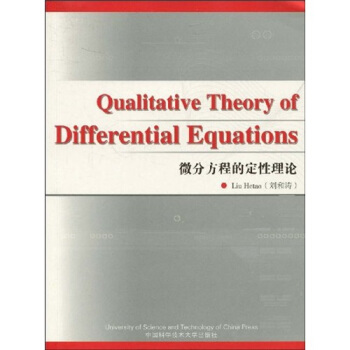![多层统计分析模型:SAS与应用 [Multilevel Models: Appfications Using SAS]](https://pic.windowsfront.com/10126444/565524e9Nbbe30c69.jpg)

具体描述
编辑推荐
本书是国内第1本系统介绍各种多层模型的教学和科研参考书。书中采用国际通用的著名统计软件SAS来演示各种多层模型的应用,结合具体的实例,由浅入深地逐步介绍如何使用不同的SAS程序,如Proc MIXED,Proc NLMIXED和Proc GLIMMIX,来进行各种多层资料的模型分析。本书可作为综合性大学,医学院、财经大学,师范院校等相应专业的研究生或本科生教材,也可供实际应用工作者参考。
内容简介
Multilevel Models: Appfications Using SAS is written in nontechnical terms focuses on the methods and applications of various multilevel models including liner multilevel modelsmultilevel logistic regression models multilevel Poisson regression models multilevel negative binomial models as well as some cutting-edge applications such as multilevel zero-inflated Poisson (ZIP) model random effect zero-inflated negative binomial model (RE-ZINB) mixed-effect mixed-distribution models bootstrapping multilevel models and group-based trajectory models. Readers will learn to build and apply multilevel models for hierarchically structured cross-sectional data and longitudinal data using the internationally distributed software package Statistics Analysis System (SAS). Detailed SAS syntax and output are provided for model applications providing students research scientists and data analysts with ready templates for their applications.作者简介
.内页插图
目录
Chapter 1 Introduction1.1 Conceptual framework of multilevel modeling
1.2 Hierarchically structured data
1.3 Variables in multilevel data
1.4 Analytical problems with multilevel data
1.5 Advantages and limitations of multilevel modeling
1.6 Computer software for multilevel modeling
Chapter 2 Basics of Linear Multilevel Models
2.1 Intraclass correlation coefficient (ICC)
2.2 Formulation of two-level multilevel models
2.3 Model assumptions
2.4 Fixed and random regression coefficients
2.5 Cross-level interactions
2.6 Measurement centering
2.7 Model estimation
2.8 Model fit, hypothesis testing, and model comparisons
2.8.1 Model fit
2.8.2 Hypothesis testing
2.8.3 Model comparisons
2.9 Explained level-1 and level-2 variances
2.10 Steps for building multilevel models
2.11 Higher-level multilevel models
Chapter 3 Application of Two-level Linear Multilevel Models
3.1 Data
3.2 Empty model
3.3 Predicting between-group variation
3.4 Predicting within-group variation
3.5 Testing random level-1 slopes
3.6 Across-level interactions
3.7 Other issues in model development
Chapter 4 Application of Multilevel Modeling to Longitudinal Data
4.1 Features of longitudinal data
4.2 Limitations of traditional approaches for modeling longitudinal data
4.3 Advantages of multilevel modeling for longitudinal data
4.4 Formulation of growth models
4.5 Data description and manipulation
4.6 Linear growth models
4.6.1 The shape of average outcome change over time
4.6.2 Random intercept growth models
4.6.3 Random intercept and slope growth models
4.6.4 Intercept and slope as outcomes
4.6.5 Controlling for individual background variables in models
4.6.6 Coding time score
4.6.7 Residual variance/covariance structures
4.6.8 Time-varying covariates
4.7 Curvilinear growth models
4.7.1 Polynomial growth model
4.7.2 Dealing with collinearity in higher order polynomial growth model
4.7.3 Piecewise (linear spline) growth model
Chapter 5 Multilevel Models for Discrete Outcome Measures
5.1 Introduction to generalized linear mixed models
5.1.1 Generalized linear models
5.1.2 Generalized linear mixed models
5.2 SAS Procedures for multilevel modeling with discrete outcomes
5.3 Multilevel models for binary outcomes
5.3.1 Logistic regression models
5.3.2 Probit models
5.3.3 Unobserved latent variables and observed binary outcome measures
5.3.4 Multilevel logistic regression models
5.3.5 Application of multilevel logistic regression models
5.3.6 Application of multilevel logit models to longitudinal data
5.4 Multilevel models for ordinal outcomes
5.4.1 Cumulative logit models
5.4.2 Multilevel cumulative logit models
5.5 Multilevel models for nominal outcomes
5.5.1 Multinomial logit models
5.5.2 Multilevel multinomial logit models
5.5.3 Application of multilevel multinomial logit models
5.6 Multilevel models for count outcomes
5.6.1 Poisson regression models
5.6.2 Poisson regression with over-dispersion and a negative binomial model
5.6.3 Multilevel Poisson and negative binomial models
5.6.4 Application of multilevel Poisson and negative binomial models
Chapter 6 Other Applications of Multilevel Modeling and Related Issues
6.1 Multilevel zero-inflated models for count data with extra zeros
6.1.1 Fixed-effect ZIP model
6.1.2 Random effect zero-inflated Poisson (RE-ZIP) models
6.1.3 Random effect zero-inflated negative binomial (RE-ZINB) models
6.1.4 Application of RE-ZIP and RE-ZINB models
6.2 Mixed-effect mixed-distribution models for semi-continuous outcomes
6.2.1 Mixed-effects mixed distribution model
6.2.2 Application of the Mixed-Effect mixed distribution model
6.3 Bootstrap multilevel modeling
6.3.1 Nonparametric residual bootstrap multilevel modeling
6.3.2 Parametric residual bootstrap multilevel modeling
6.3.3 Application of nonparametric residual bootstrap multilevel modeling
6.4 Group-based models for longitudinal data analysis
6.4.1 Introduction to group-based model
6.4.2 Group-based logit model
6.4.3 Group-based zero-inflated Poisson (ZIP) model
6.4.4 Group-based censored normal models
6.5 Missing values issue
6.5.1 Missing data mechanisms and their implications
6.5.2 Handling missing data in longitudinal data analyses
6.6 Statistical power and sample size for multilevel modeling
6.6.1 Sample size estimation for two-level designs
6.6.2 Sample size estimation for longitudinal data analysis
Reference
精彩书摘
In the linear model case, this integral can be solved in closed form, and the resulting likelihood or restricted likelihood can be maximized directly. For nonlinear multilevel models, however, the integral is usually unknown and must be approximated. Many methods have been proposed for such maximization approximation. Two basic methods are: 1) linearization, which approximates the integrated likelihood function using techniques such as Taylor series expansion, 2) integral approximation with numerical methods. These approaches are implemented in two SAS procedures, PROC GLIMMIX and PROC NLMIXED and two macros, %GLIMMIX and %NLMIXED, respectively.Prior to the current version of SAS (SAS 9.2) (SAS Institute Inc., 2008), PROC GLIMMIX is solely based on linearization methods. In version 9.2 of PROC GLIMMIX, linearization is the default estimation method, and two numerical integration methods——Laplace approximation method and adaptive Gauss-Hermite quadrature have been added as options. The linearization method is also called a pseudo-likelihood method, in which pseudo-data are generated from the original data, and likelihood function is approximated using Taylor series expansions (Schabenberger, 2005). The essential idea of the linearization method is to approximate GLMM using normal linear mixed model estimates repeatedly. Among the various linearization methods available in the procedure, the default method is the restricted or residual pseudo-likelihood (REPL) (Wolfinger & OConnell, 1993). The maximization of the pseudo-likelihood can be carried out by various optimization techniques in PROC GLIMMIX. The default optimization technique is the Newton-Raphson algorithm.
The major advantages of linearization-based methods include: First, they can fit models for which the joint distribution is difficult or impossible to ascertain. Second, compared with numerical integration methods, they allow a larger number of random effects to be estimated in the model. Third, the variance/covariance structure of the level-1 residual matrix (i.e., R matrix) can be readily accommodated. Fourth, the model is iteratively estimated based on the linear mixed model, thus both ML and REML are available for model estimation (Schabenberger, 2005). In addition, in our experience, linearization based models are much faster to run.
The disadvantages of linearization-based methods include: First, they are based on iterative model estimation using pseudo-data constructed from the original data; as such, they do not have a real likelihood, and therefore -2LL or deviance statistic cannot be used for model comparisons. Second, PROC GLIMMIX does not support a broad array of variance/covariance structures of the R matrix that you can draw on with the PROC MIXED procedure (Schabenberger, 2005).
前言/序言
Interest in multilevel statistical models for social science and public health studies has been aroused dramatically since the mid-1980s. New multilevel modeling techniques are giving researchers tools for analyzing data that have a hierarchical or clustered structure. Multilevel models are now applied to a wide range of studies in sociology, population studies, education studies, psychology, economics, epidemiology, and public health.Individuals and social contexts (e.g., communities, schools, organizations, or geographic locations) to which individuals belong are conceptualized as a hierarchical system, in which individuals are micro units and contexts are macro units. Research interest often centers on whether and how individual outcome varies across contexts, and how the variation is explained by contextual factors; what and how the relationships between the outcome measures and individual characteristics vary across contexts, and how the relationships are influenced or moderated by contextual factors. To address these questions, studies often employ data collected from more than one level of observation units, i.e., observations are collected at both an individual level (e.g., students) and one or more contextual levels (e.g., schools, cities). As a result, the data are characterized by a hierarchical structure in which individuals are nested within units at the higher levels. This kind of data is called hierarchically structured data or multilevel data. The conventional single-level statistical methods, such as ordinary least square(OLS) regression are inappropriate for analysis of multilevel data because observations are nonindependent and the contextual effects cannot be addressed appropriately in such models. Multilevel modeling not only takes into account observation dependence in the multilevel data, but also provides a more meaningful conceptual framework by allowing assessment of both individual and contextual effects, as well as cross-level interaction effects.
This book covers a broad range of topics about multilevel modeling. Our goal is to help students and researchers who are interested in analysis of multilevel data to understand the basic concepts, theoretical frameworks and application methods of multilevel modeling. This book is written in non-mathematical terms, focusing on the methods and application of various multilevel models, using the internationally widely used statistical software, the Statistics Analysis System (SAS). Examples are drawn from analysis of real-world research data. We focus on twolevel models in this book because it is most frequently encountered situation in real research. These models can be readily expanded to models with three or more levels when applicable. A wide range of linear and non-linear multilevel models are introduced and demonstrated.
用户评价
这本书的出现,绝对是为我这样的数据分析新手量身打造的。在接触《多层统计分析模型:SAS与应用》之前,我对于多层模型,基本上是一无所知,脑子里只有一些模糊的概念。但这本书,真的就像一座灯塔,照亮了我前行的方向。作者从最基础的“什么是层级”开始讲起,一点点地剖析了为什么传统的统计方法在处理这类数据时会出现偏差,然后才引出了多层模型这个强大的工具。 最让我感到惊喜的是,它并没有停留在理论的层面。书中对于SAS软件的使用,进行了非常详尽的讲解。每一行代码,每一个参数,作者都给出了清晰的说明,并且配有实际的数据集进行演示。我跟着书中的指导,亲手在SAS中敲击键盘,看到那些复杂的模型一步步地被构建出来,最终得到有意义的分析结果,那种感觉简直太棒了!这让我觉得,之前我对SAS的畏惧完全是多余的,只要有好的指导,SAS也可以变得亲切起来。 更重要的是,这本书让我学会了如何“思考”多层模型。作者不仅仅是告诉你怎么做,更重要的是解释了“为什么”要这样做。他对不同模型选择的考量,对模型假设的强调,以及对模型结果的细致解读,都让我受益匪浅。我不再只是被动地接受分析结果,而是能够主动地去理解、去质疑、去改进。这本书真正培养了我独立进行多层统计分析的能力。 我特别喜欢书中关于模型拟合度的讨论,以及如何通过各种指标来评估模型的优劣。这一点对于我来说至关重要,因为我之前经常纠结于如何判断一个模型是否“好”。这本书提供了一个非常清晰的框架,让我能够更理性地进行模型评估。 总的来说,《多层统计分析模型:SAS与应用》这本书,真的是一本难得的好书。它不仅传授了知识,更重要的是,它激发了我对数据分析的热情,让我看到了多层模型在解决现实问题上的巨大潜力。我会毫不犹豫地向任何一位想要深入了解多层统计分析,并且希望借助SAS进行实践的读者推荐这本书。
评分翻开《多层统计分析模型:SAS与应用》这本书,我仿佛进入了一个全新的统计世界。作者用一种非常引人入胜的方式,为我打开了多层模型的大门。一开始,我就被书中对数据结构层级性的深入探讨所吸引,比如学生被嵌套在班级里,班级又被嵌套在学校里。这种层层嵌套的数据结构,在我们的研究中比比皆是,而传统的单层模型往往无法充分捕捉到这种信息。 书中对SAS的运用部分,简直是为我量身定做的。我之前一直觉得SAS操作起来比较复杂,但这本书的SAS代码示例,清晰明了,并且提供了详细的步骤说明。我跟着书中的指导,一步步地在SAS中进行操作,从数据输入到模型输出,每一步都让我感到充满信心。作者还对SAS的输出结果进行了非常深入的解读,让我能够理解每一个统计量代表的含义,以及如何根据这些结果来评估模型的质量。 我尤其欣赏书中对于不同类型多层模型的详细介绍,比如随机截距模型、随机斜率模型,以及如何纳入协变量。作者通过生动的例子,解释了这些模型的原理和适用场景,让我能够根据自己的研究问题,选择最合适的多层模型。而且,作者还提醒我们要注意模型的假设条件,以及如何检验这些假设,这一点非常重要,它帮助我避免了因为模型假设不满足而产生的错误分析。 这本书的逻辑非常清晰,从基本概念到高级模型,层层递进。即使我对多层模型了解不多,也能循序渐进地学习。作者的语言风格也非常友好,没有过多的专业术语,让我学习起来毫无压力。我感觉作者就像一位经验丰富的导师,耐心细致地指导我一步步地掌握多层统计分析的技巧。 总而言之,《多层统计分析模型:SAS与应用》这本书,是我在统计分析领域的一大发现。它不仅为我提供了强大的分析工具,更重要的是,它改变了我对数据分析的思维方式,让我能够更深入地理解和挖掘数据背后的信息。
评分这本书的内容,让我对数据分析有了全新的视角。之前我一直觉得,要把复杂的数据结构进行分析,是非常困难的,但《多层统计分析模型:SAS与应用》这本书,就像一道光,照亮了我前进的道路。作者在书中,没有只停留在概念的陈述,而是非常详尽地讲解了,如何从实际问题出发,一步步地构建出适合的数据模型。我尤其喜欢书中对各种模型的解释,不仅仅是公式上的推导,更是对其背后逻辑的深入剖析,这让我明白,每一个参数,每一个检验,都代表着什么实际意义。 SAS的运用部分,更是让我觉得这本书的实用性极强。作者提供了非常详细的SAS代码,并且对代码的每一部分都进行了清晰的注释,这让我在学习过程中,可以非常方便地进行模仿和实践。我跟着书中的步骤,一步步地操作,从数据的预处理,到模型的构建,再到结果的解读,每一步都做得非常扎实。而且,书中还提供了多种模型的比较方法,让我能够更好地评估不同模型的效果,选择最适合当前数据的模型。 这本书最吸引我的地方在于,它并没有把多层模型讲得高高在上,而是用一种非常接地气的方式,将复杂的理论转化为易于理解和操作的知识。作者的语言非常流畅,没有过多的专业术语,即使是初学者,也能轻松上手。我感觉作者是在用我的语言和我沟通,而不是在炫耀他的专业知识。这种亲切感,让我学习起来更加有动力,也更加有成就感。 书中对模型假设的讨论,也让我觉得非常重要。作者强调,任何模型都有其局限性,理解模型的假设,才能更好地解读模型的输出结果。这一点,让我受益匪浅,我再也不会盲目地套用模型,而是会更加谨慎地思考,我的数据是否符合模型的假设,以及模型结果是否具有实际意义。 总之,《多层统计分析模型:SAS与应用》这本书,是所有对多层统计模型感兴趣的读者,特别是希望通过SAS进行实际操作的人,不可多得的宝藏。它不仅教会了我如何分析数据,更教会了我如何思考数据。
评分这本《多层统计分析模型:SAS与应用》真是让我大开眼界,之前我对多层模型一直知之甚少,总觉得它高深莫测,但这本书就像一位循循善诱的老师,一步步地将我引入了这个迷人的领域。作者的讲解非常清晰,从最基础的概念讲起,比如什么是层级结构,为什么需要多层模型,以及它与传统单层模型的区别。我特别喜欢书中那些精心设计的例子,它们真实地反映了我们在实际研究中可能遇到的各种情况,比如学生在学校的学习效果,或者病人对某种治疗的反应,这些都涉及到嵌套的数据结构。 更让我惊喜的是,书中并没有止步于理论讲解,而是非常详尽地介绍了如何使用SAS软件来实现这些模型。SAS的操作步骤、代码示例都写得非常具体,我跟着书中的指导,一步步地在SAS中运行代码,看到结果出来的时候,那种成就感是难以言喻的。作者还提供了很多关于SAS输出结果的解读,这对于我这样初次接触SAS进行多层分析的人来说,简直是救星。我能够理解每个统计量的含义,以及如何根据结果来判断模型的拟合优度,甚至是如何进行模型改进。 这本书的结构安排也十分合理,从简单到复杂,循序渐进。初期的章节让我对多层模型有了整体的认识,后面的章节则深入探讨了各种更复杂的多层模型,比如随机效应模型、固定效应模型,以及如何处理协变量的影响。作者在讲解每一种模型时,都会详细说明其假设条件、模型公式以及SAS的实现方法。我印象深刻的是关于随机截距和随机斜率的讨论,这让我明白了为什么在不同层级上,效应的大小和方向可能会发生变化,以及如何量化这种变化。 总体而言,《多层统计分析模型:SAS与应用》不仅仅是一本技术手册,更是一本能够激发我研究兴趣的书。它让我看到了多层模型在解决复杂问题上的强大潜力,也让我对如何设计和分析具有层级结构的数据有了更深刻的理解。书中的案例分析部分更是让我受益匪浅,作者通过展示如何将理论模型应用于实际数据,帮助我学会了如何将学到的知识转化为解决实际问题的能力。我甚至开始思考,我自己的研究项目是否也可以引入多层模型来获得更深入的见解。 我强烈推荐这本书给任何对多层统计分析感兴趣的读者,尤其是那些希望利用SAS进行实操的学者和学生。即便你之前对多层模型一无所知,也不必担心。这本书的语言通俗易懂,不会让你感到晦涩难懂。而且,书中提供的SAS代码可以直接复制粘贴使用,这极大地降低了学习门槛。我觉得这本书的价值远远超过了它的价格,它为我打开了一扇通往更高级统计分析方法的大门,让我对未来的研究充满了信心。
评分《多层统计分析模型:SAS与应用》这本书,给我带来了非常深刻的启发,我之前一直认为,统计分析就是一个套公式的过程,但这本书让我明白,数据分析远不止于此。作者在书中,详细地解释了多层模型是如何工作的,以及它在处理具有层级结构的数据时,能够提供多么强大的洞察力。我之前在研究中遇到的很多问题,比如如何解释个体差异和群体差异,这本书都给了我很好的解答。 SAS的使用部分,对我来说是极大的福音。我之前一直对SAS感到畏惧,觉得它操作复杂,但这本书的SAS代码示例,简直是手把手的教学。我跟着书中的例子,一步步地运行代码,并且理解每一个步骤的含义。作者对SAS输出结果的解读,也让我能够更清晰地理解模型的输出,不再感到茫然。 我特别喜欢书中对各种多层模型进行比较的章节,这让我知道,如何根据实际情况,选择最适合的模型。作者不仅讲解了模型的原理,还强调了模型的假设条件,以及如何检验这些假设。这一点,让我觉得这本书非常严谨,也更加具有实践指导意义。 这本书的写作风格非常吸引人,语言流畅,概念清晰。作者没有使用过多的晦涩难懂的术语,让我能够轻松地理解复杂的内容。我感觉作者就像一位经验丰富的研究者,在与我分享他的知识和经验。 总而言之,《多层统计分析模型:SAS与应用》这本书,让我对多层统计分析有了全新的认识,也让我对如何运用SAS进行实际分析有了更深的理解。这本书不仅是一本技术指南,更是一本能够激发我研究潜能的宝典。
评分讲的挺好,就是使用的英语有点难,不像有些英文教材看起来难么容易。
评分讲的挺好,就是使用的英语有点难,不像有些英文教材看起来难么容易。
评分讲的挺好,就是使用的英语有点难,不像有些英文教材看起来难么容易。
评分讲的挺好,就是使用的英语有点难,不像有些英文教材看起来难么容易。
评分讲的挺好,就是使用的英语有点难,不像有些英文教材看起来难么容易。
评分讲的挺好,就是使用的英语有点难,不像有些英文教材看起来难么容易。
评分讲的挺好,就是使用的英语有点难,不像有些英文教材看起来难么容易。
评分讲的挺好,就是使用的英语有点难,不像有些英文教材看起来难么容易。
评分讲的挺好,就是使用的英语有点难,不像有些英文教材看起来难么容易。
相关图书
本站所有内容均为互联网搜索引擎提供的公开搜索信息,本站不存储任何数据与内容,任何内容与数据均与本站无关,如有需要请联系相关搜索引擎包括但不限于百度,google,bing,sogou 等
© 2025 book.coffeedeals.club All Rights Reserved. 静流书站 版权所有




![高级动物免疫学 [Advanced Veterinary Immunology] pdf epub mobi 电子书 下载](https://pic.windowsfront.com/11981288/57832d79Nc32ddf14.jpg)


![“数学小子”丛书:阿曼达的疯狂大梦 [3-6岁] pdf epub mobi 电子书 下载](https://pic.windowsfront.com/11696910/557fe447N402c1c20.jpg)












